This easy homemade sauerkraut recipe is a wonderful way to improve your gut health and immune system.
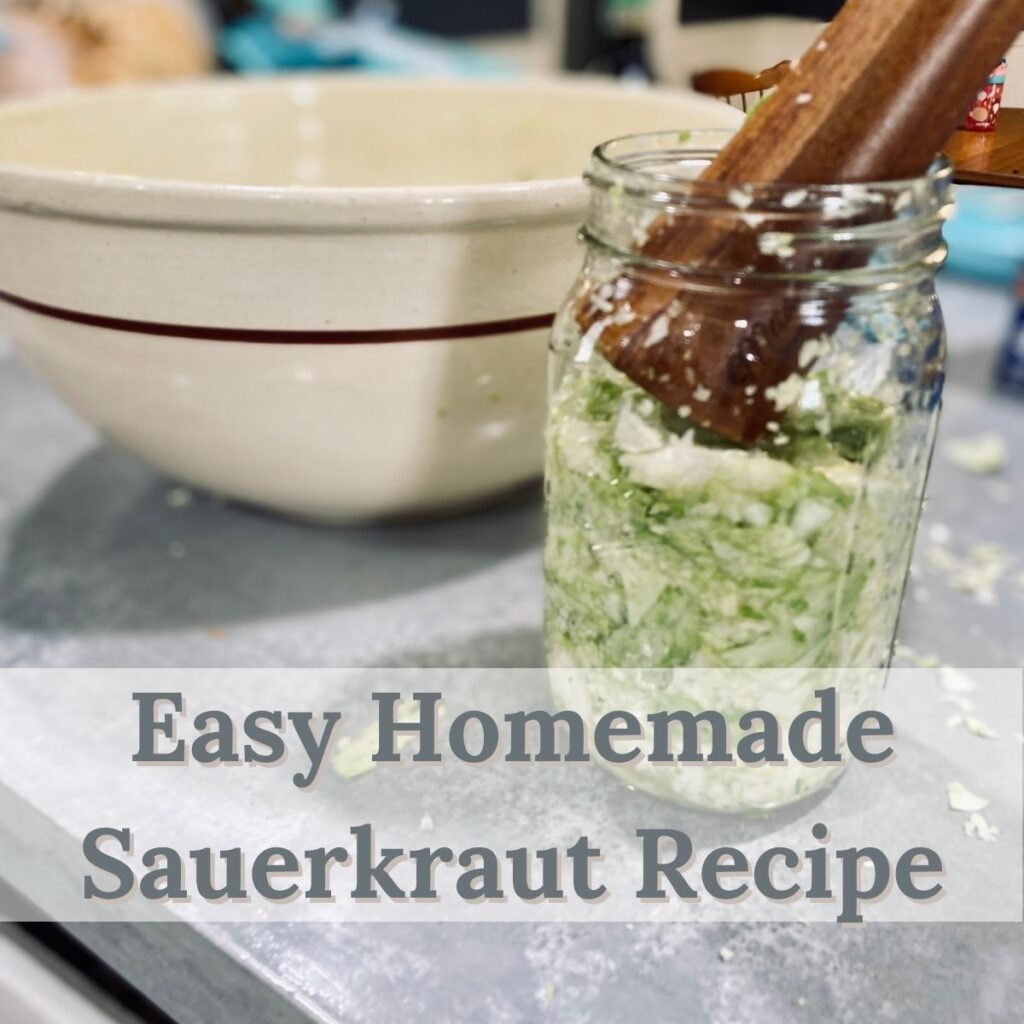
Discloser Note:
This post may contain affiliate links, which means I make a small commission at no extra cost to you. See my full disclosure here.
I have recently been learning more about gut health and how vital it is for your entire body. A healthy gut helps you to better absorb nutrients and have a strong immune system. (source)
There have been studies that show your gut health will also impact your mental health due to the gut-brain axis. As someone who has struggled with both anxiety and depression this is something that really stood out to me. Essentially, the gut-brain axis is the communication network between the gastrointestinal tract and the central nervous system, aka your brain. A healthy gut does so many amazing things for your body!
Is Fermented Sauerkraut Good For You?
Yes! The fermentation process that turns cabbage into sauerkraut creates an environment where beneficial bacteria, known as probiotics, thrives. This easy homemade sauerkraut recipe is going to teach you how to ferment your own cabbage to make sauerkraut.
Fermented sauerkraut is also a good source of fiber, vitamins C and K, and antioxidants. It’s low in calories and fat, making it a healthy addition to a balanced diet.
Is Sauerkraut Anti-Inflammatory?
Yes! In a recent study sauerkraut “has been shown to exert anti-inflammatory activity”.
We know that sauerkraut is fantastic for gut health. When talking about inflammation your gut health will play a big role. An unhealthy gut can lead to chronic inflammation in the body, which is linked to a range of health problems, including heart disease, diabetes, and cancer.
Tips For This Easy Homemade Sauerkraut Recipe:
- Glass fermentation weights are a great tool to have. While you can ferment without them by using heavy rocks I have found that using the glass weights is much easier.
- Any cabbage that is above the liquid, or brine, is susceptible to mold. It is important to weigh the cabbage down properly to prevent introducing mold.
- Fermentation lids are another fantastic tool to have. You can ferment without these lids but I am so convinced that a jar will explode on me that I’ve always just used the fermentation lids. They are not too expensive, can be reused over and over, and honestly they just do wonders for my peace of mind.
Ingredients For Homemade Sauerkraut Recipe
- Cabbage
- Quality salt (I prefer Redmond Real Salt and use it for everything in my kitchen)
Tools You Will Need
- Large bowl
- Food processor or knife
- Half gallon mason jar
- Fermentation weights
- Fermentation lids
- Teaspoon measuring spoon
How To Make Easy Homemade Sauerkraut
First, pull off a few outer leaves of the cabbage and set them aside. You will use them again in the last step of the recipe.
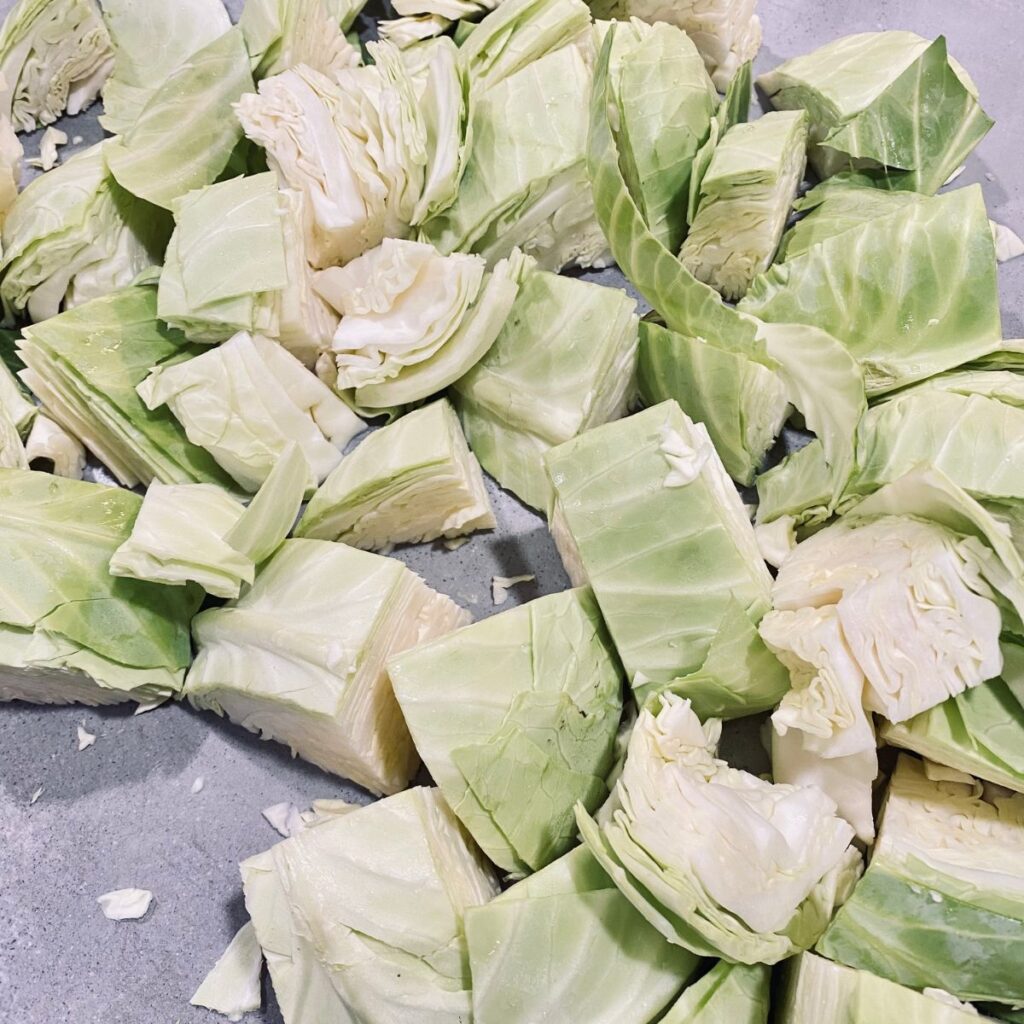
Next, shred the cabbage to your desired consistency. A food processor is great for this if you like to have finely shredded sauerkraut but a knife works just as well to chop the cabbage up finely. Personally I do a combination of about half my cabbage in the food processor to be shredded very finely and the rest roughly chopped with a knife into small pieces. You will just shred the cabbage to your desired preference.
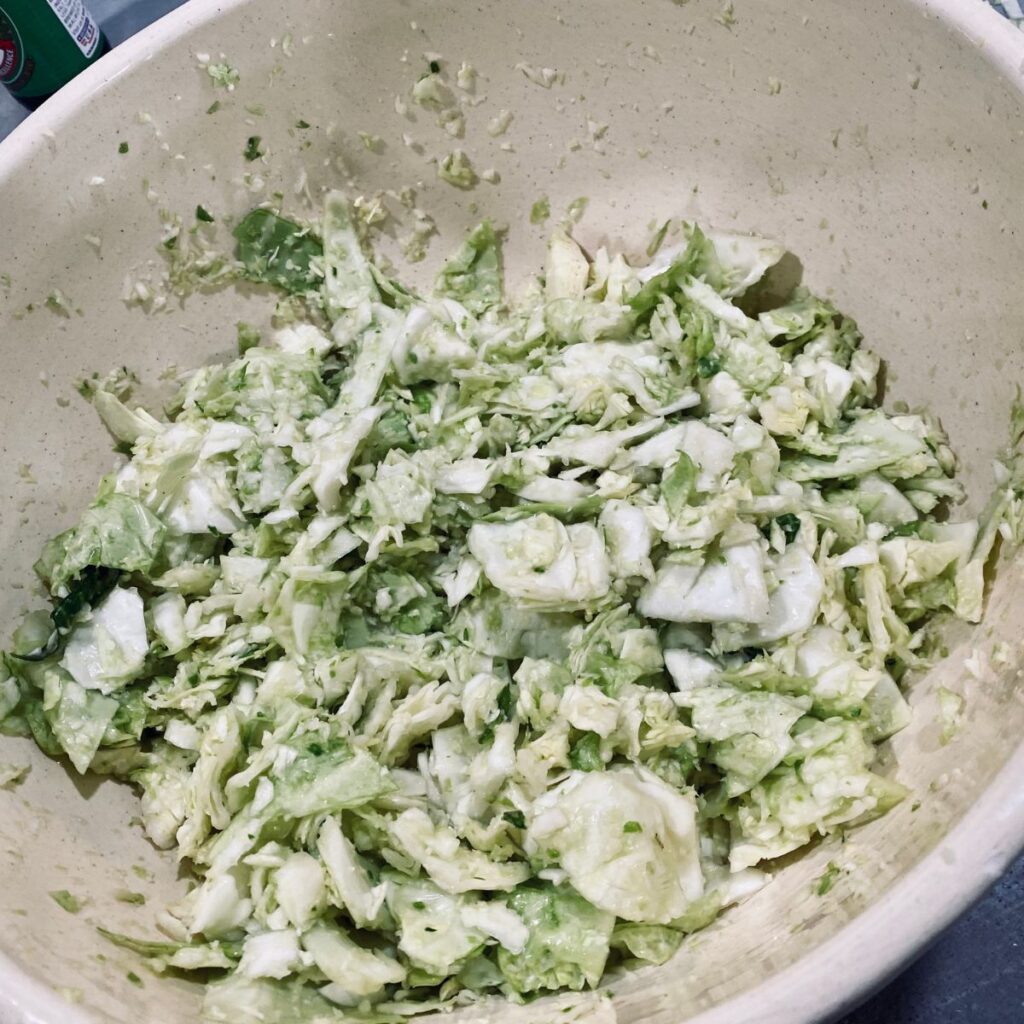
Third, you will put the shredded cabbage into a large bowl, add your salt, and work the salt into the cabbage with your hands. As you massage the salt into the cabbage it will start to produce a liquid known as the brine. It may take several minutes of massaging before the cabbage has made enough juice before you can move on to the next step.
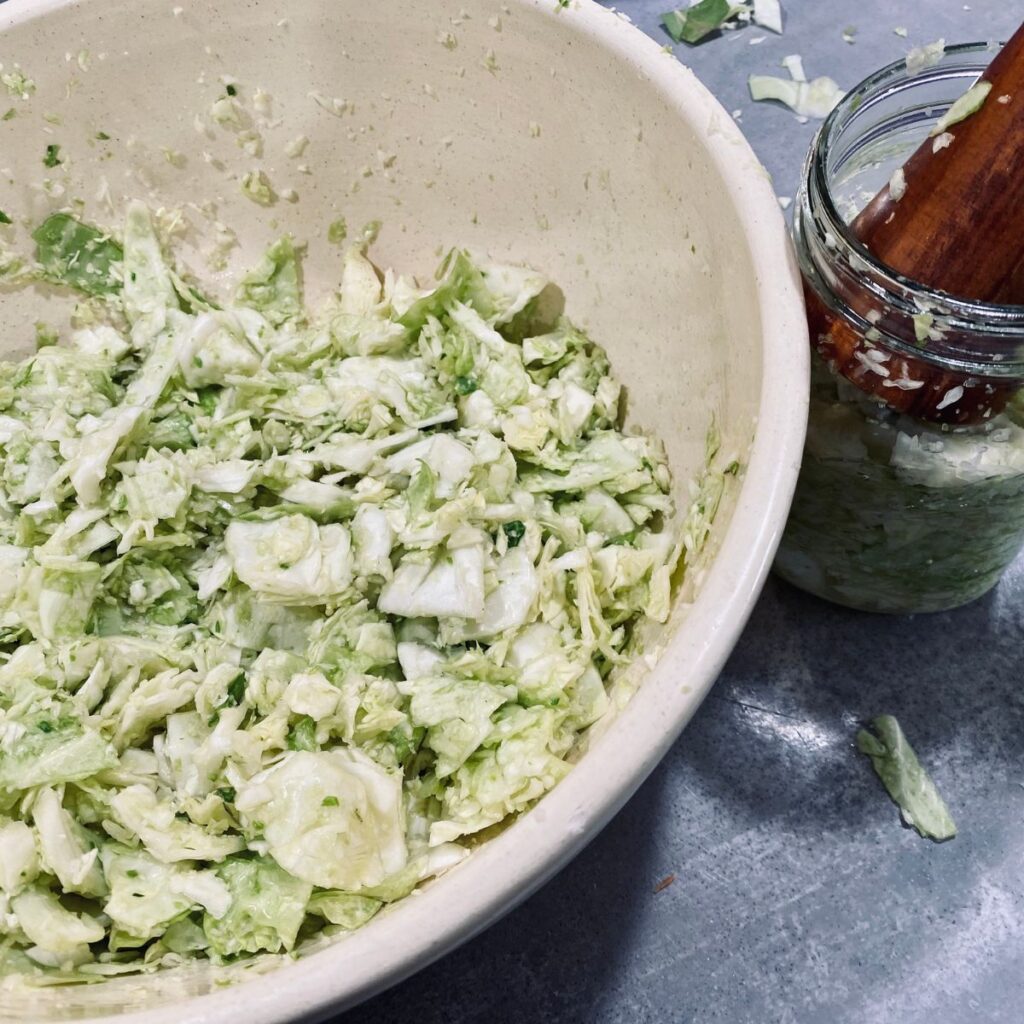
Finally, you will put the cabbage into your mason jar. Pack the cabbage in very tightly. You want the cabbage to be completely submerged beneath the liquid, or brine, in your jar. Any parts of the cabbage that are above the liquid line and exposed to oxygen may mold. I use a pickle packer for this step but you can also use your hand or fist.
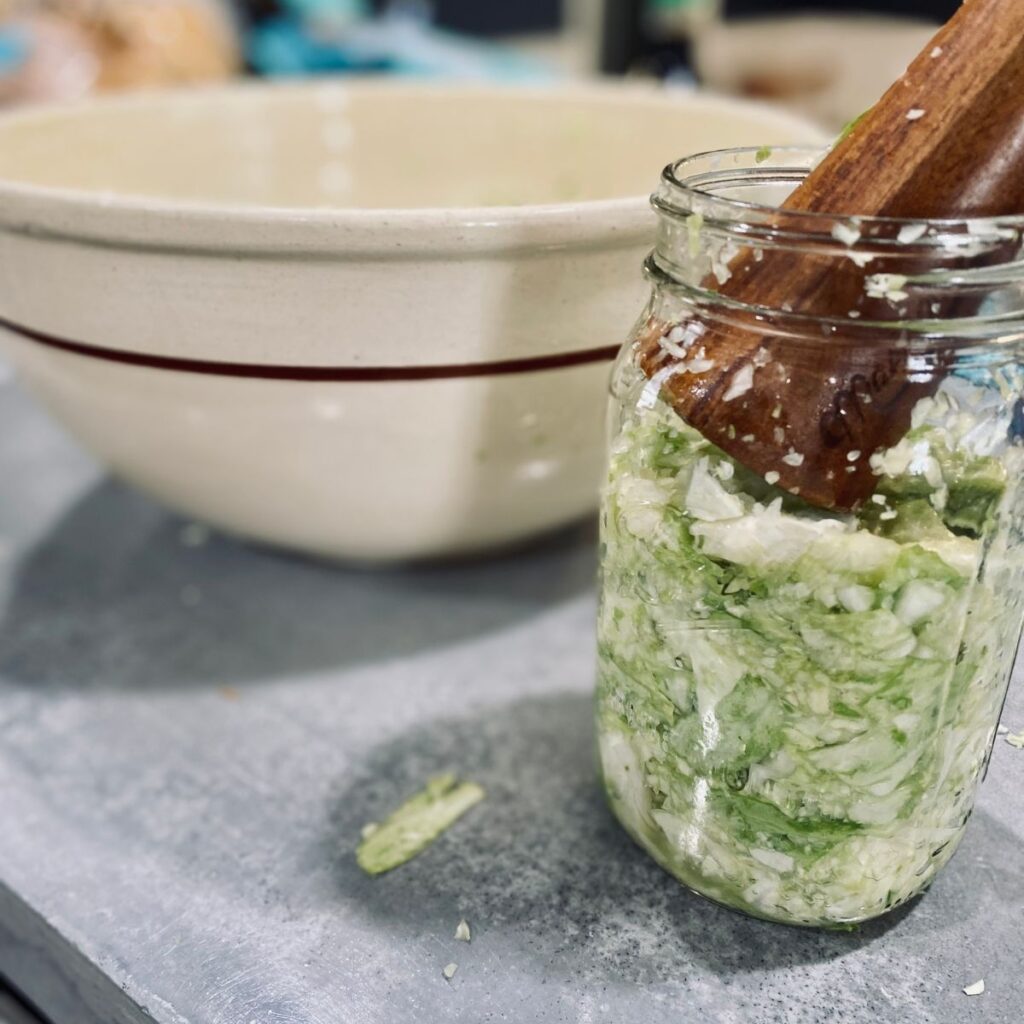
Use the cabbage leaves you saved earlier to put on top of the shredded cabbage and help to keep everything submerged below the brine. Add your fermentation weight on top of the cabbage to ensure that everything stays submerged during the fermentation process. Put the fermentation lid onto your jar and set it on your counter to ferment.
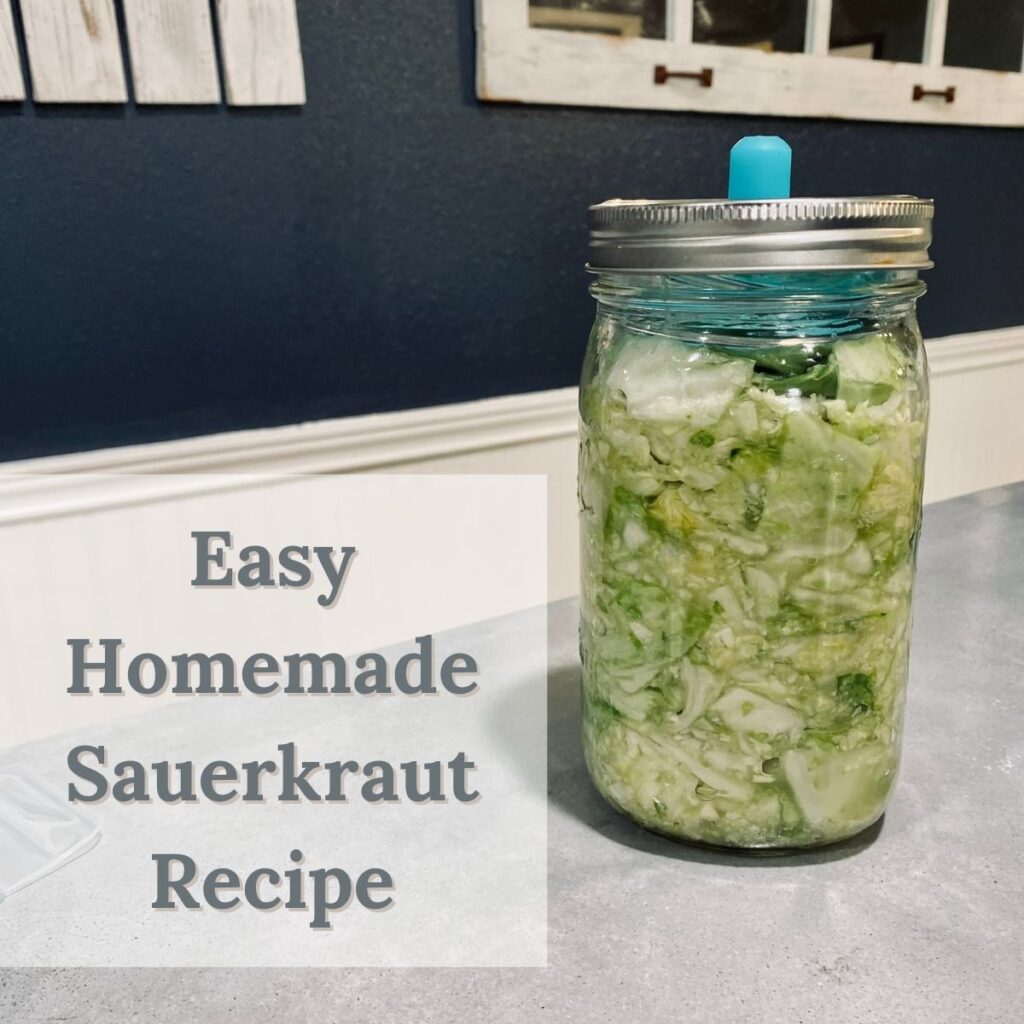
How Long Should I Let Sauerkraut Ferment?
Leave the sauerkraut to ferment anywhere from 3 days to 2 weeks. This will depend on your personal taste preference. The longer the sauerkraut is sitting to ferment the more pungent the flavor profile will be.
If you are new to sauerkraut you may want to stick to a shorter amount of fermentation time at the beginning.
Once you are satisfied with the fermentation remove the weights from the jar, replace the fermentation lid with a regular lid, and store your sauerkraut in the fridge. It will last about 6 months stored in the fridge.
Easy Homemade Sauerkraut Recipe

This easy homemade sauerkraut recipe is a wonderful way to improve your gut health and immune system.
Ingredients
- 2 large heads of cabbage
- 3 tablespoons of high quality salt
Instructions
- Pull off a few of the outer leaves of the cabbage and set aside
- Chop and shred cabbage to your desired texture level
- Put cabbage in a large bowl and add salt
- Using your hands massage the salt into the cabbage until enough of a liquid, or brine, has developed
- Pack the cabbage into a mason jar very tightly being very sure that all of the cabbage pieces are below the liquid
- Fold up the reserved cabbage leaves and add them on top of the shredded cabbage to assist in keeping everything below the brine.
- Add your fermentation weight and fermentation lid to the jar
- Allow to ferment on the kitchen counter for 3 days to 3 weeks depending upon your taste preference.
- Remove weight and replace the fermentation lid with a regular lid. Store in the fridge for up to 6 months
Notes
It is very important that all of the cabbage sits below the liquid line in the jar while fermenting. Any cabbage that is above the liquid and exposed to oxygen will be likely to mold.
The amount of time you allow the cabbage to ferment is based upon your taste preferences. The longer the sauerkraut sits on the counter the more pungent the flavor profile will be. If you are new to sauerkraut I recommend starting with a shorter fermentation time.
Pin It For Later
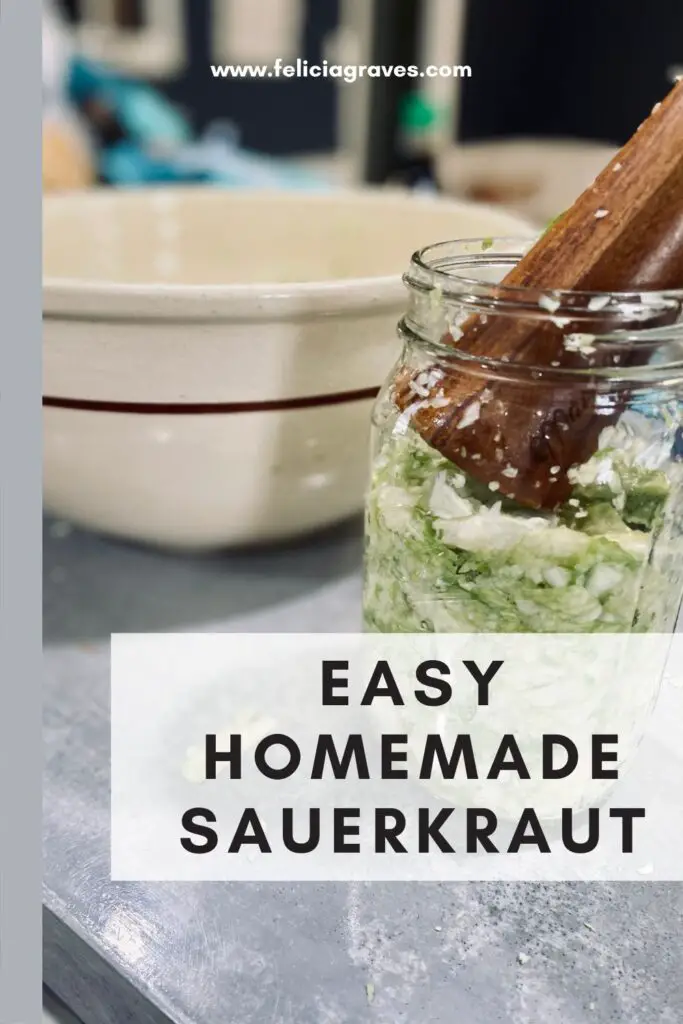

Leave a Reply